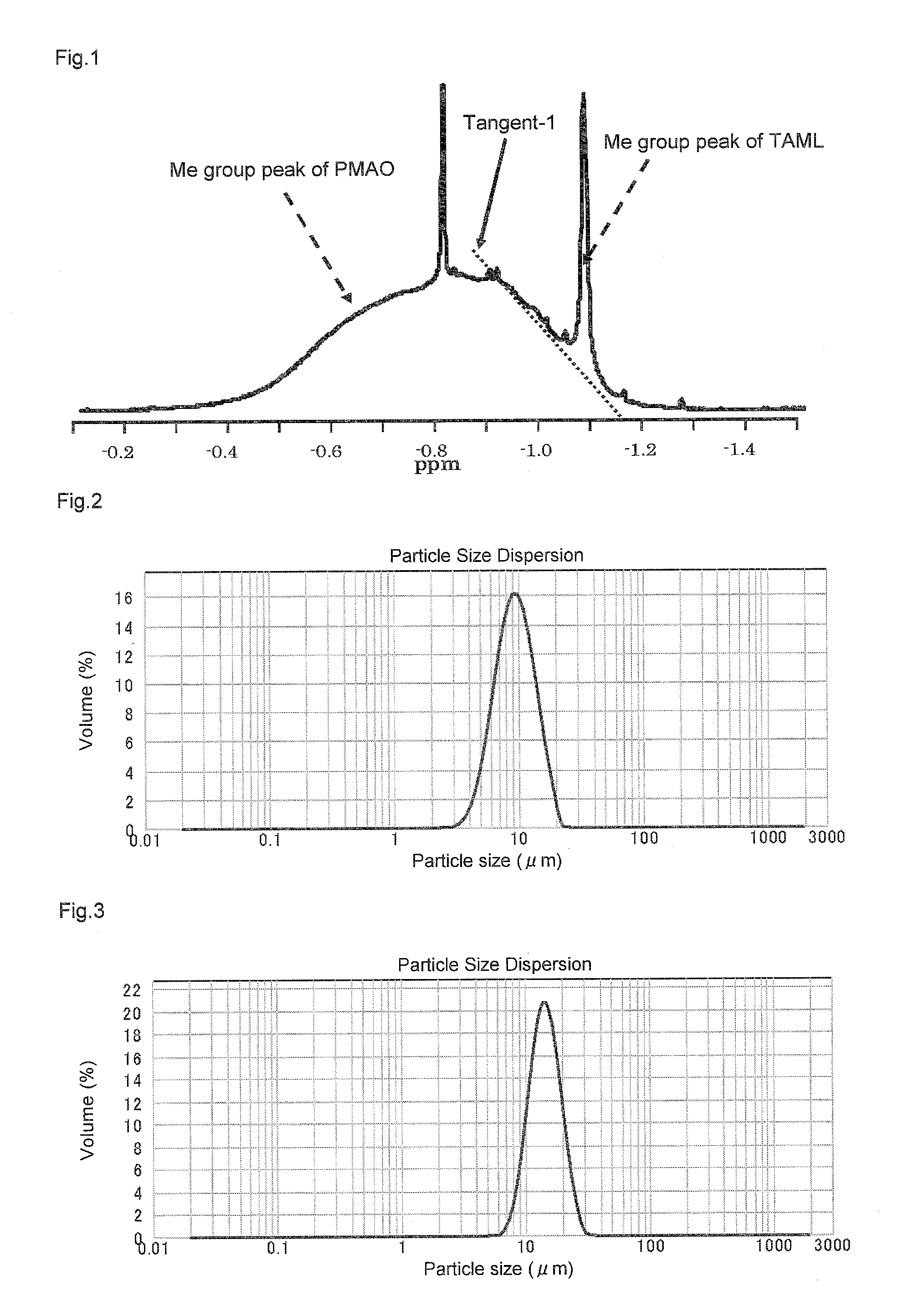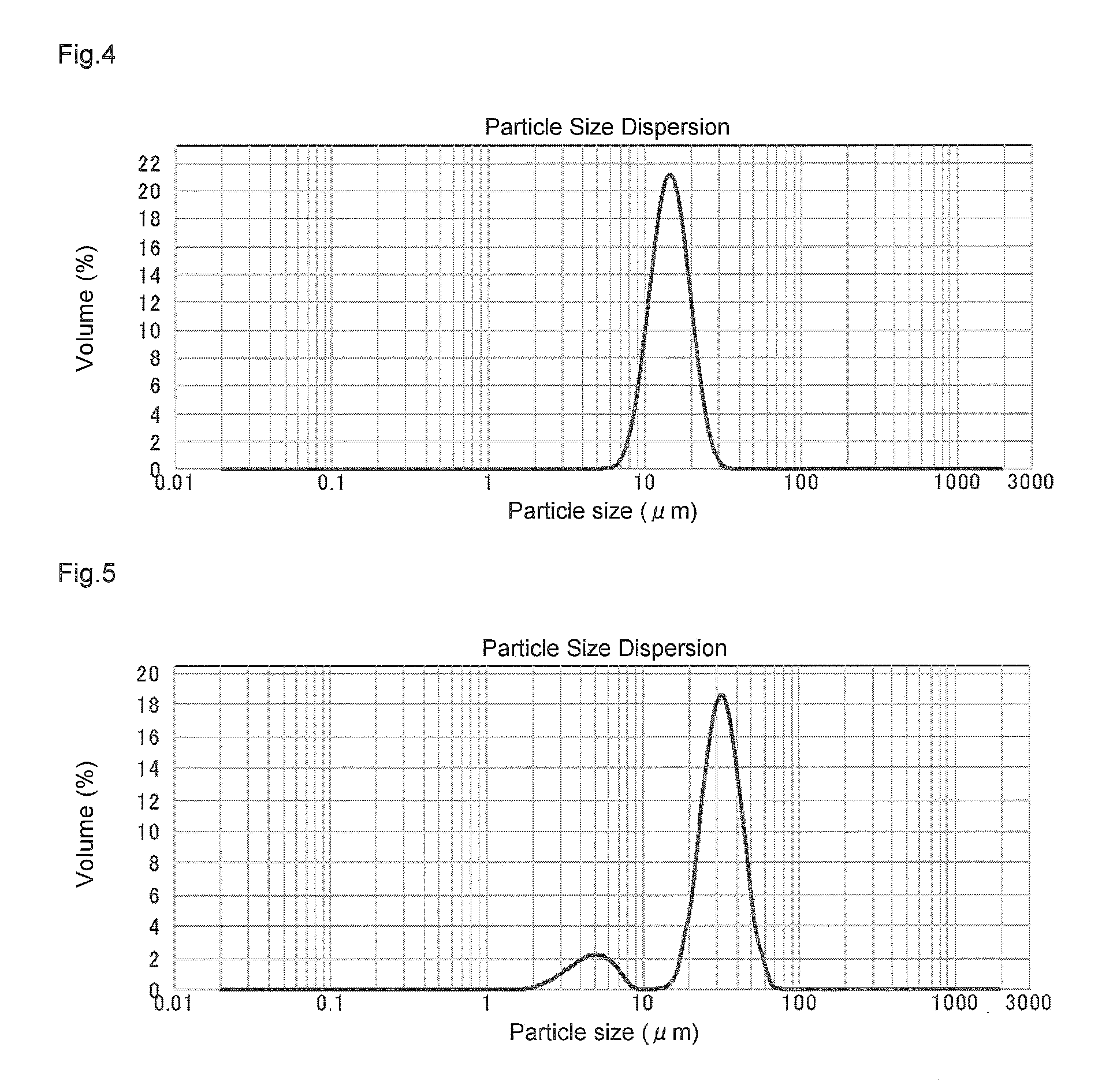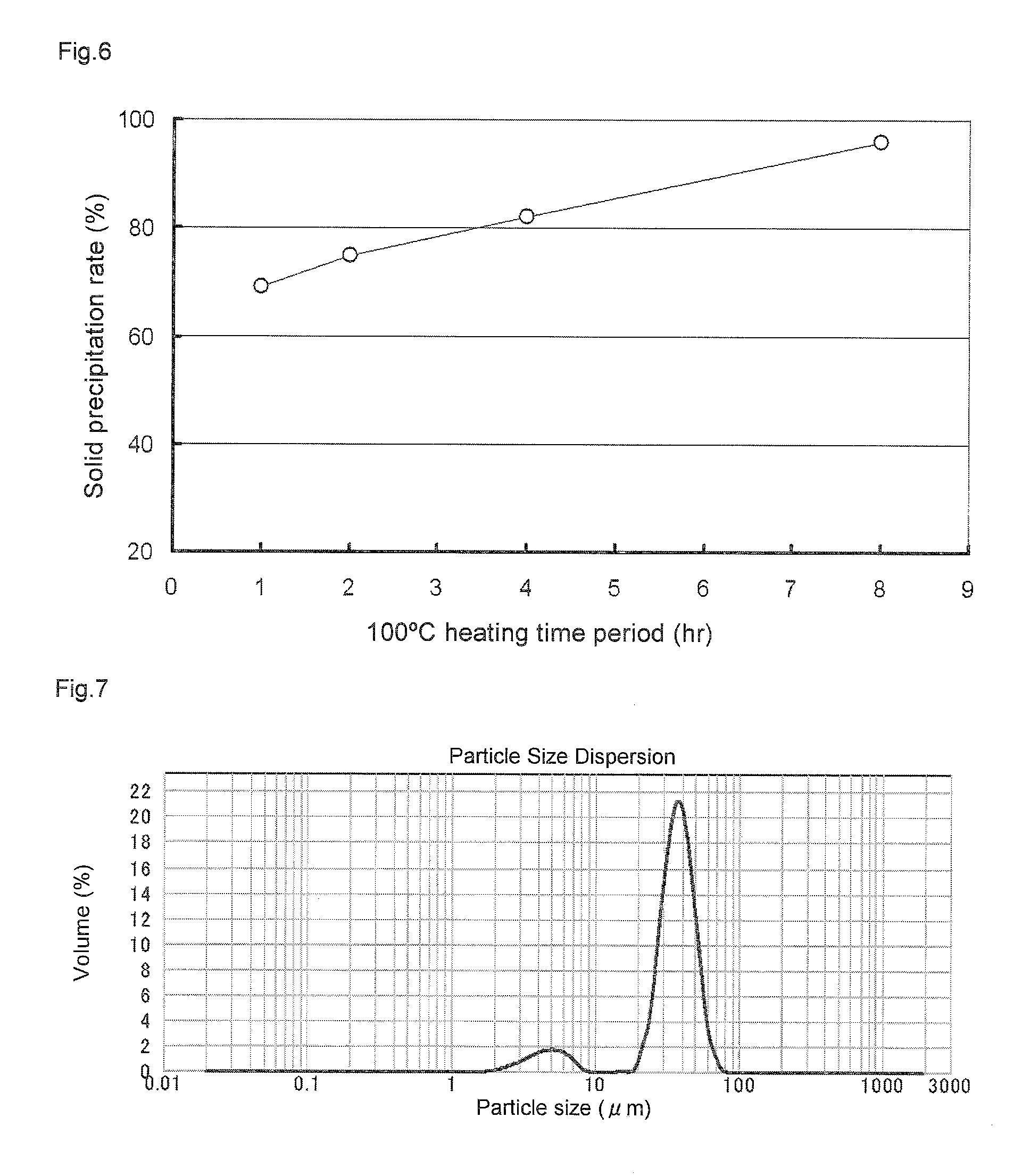Solid polymethylaluminoxane composition and method for manufacturing same
a technology of polymethylaluminoxane and composition, which is applied in the direction of catalyst activation/preparation, chemical/physical processes, group 3/13 element organic compounds, etc., can solve the problems of high prone to fouling due to adhesion of the polymer to the polymerization reaction vessel or the like, and the morphology of the polymer produced cannot be controlled, etc., to achieve simple and high yield, low solubility in solvents, and high polymerization activity
- Summary
- Abstract
- Description
- Claims
- Application Information
AI Technical Summary
Benefits of technology
Problems solved by technology
Method used
Image
Examples
embodiments
[0101]The present invention is described in detail below through embodiments. However, the present invention is not limited to the embodiments.
[0102]In the embodiments set forth below, the solid polymethylaluminoxane composition was normally dried under a full vacuum with a vacuum pump at 40° C. through a sealed pot containing liquid paraffin. The drying was ended when no bubbles were observed in the sealed pot.
[Test Methods]
(1) Solubility
[0103]The solubility of the solid polymethylaluminoxane composition of the present invention in n-hexane and in toluene maintained at a temperature of 25° C. was measured according to the method described in JP-B (KOKOKU)-H07-42301. Specifically, the solubility in n-hexane was determined by adding 2 g of the solid polymethylaluminoxane composition to 50 mL of n-hexane maintained at 25° C., stirring for two hours, separating the solution with a G-4 glass filter, and measuring the aluminum concentration in the filtrate. The solubility measured by thi...
embodiment 1
(1) Synthesis of Solid Polymethylaluminoxane Composition
[0133]To a separable flask with an internal volume of 5 L equipped with stirrer was charged 406.5 g (1.361 mol-Al) of the polymethylaluminoxane composition prepared in Preliminary Test 4 (Al / O=1.20) and the solution was heated for 8 hours at 100° C. with stirring. A solid polymethylaluminoxane composition precipitated during heating. The solution was cooled to 30° C. or lower and 3.6 L of n-hexane was added with stirring for washing. The solid polymethylaluminoxane composition was decanted, the supernatant was removed, and a decantation washing operation was conducted twice with 3 L of n-hexane. The solid obtained was dried under reduced pressure at room temperature to obtain a dry solid polymethylaluminoxane composition. The precipitation rate of the dry solid polymethylaluminoxane composition was 96 percent based on aluminum atoms in the polymethylaluminoxane composition in solution employed. The quantity of Me(TMAL) in the s...
embodiment 1-2
[0142]A toluene solution of the polymethylaluminoxane composition prepared in Preliminary Test 4 was heat treated in the same manner as in Embodiment 1 to induce the precipitation of a solid product. Subsequently, without washing with n-hexane, the particle size distribution of the reaction solution was directly measured. Toluene was employed as solvent in a Master Sizer 2,000 Hydro S. As a result, the particle morphology was such that at hour 4 of heating, the median diameter d (0.5) based on volume was 14.5 μm (see FIG. 3) and at hour 8 of heating, the median diameter d (0.5) based on volume was 14.6 μm (see FIG. 4).
[0143]In Embodiment 1, the particle size distribution was evaluated for a dry solid polymethylaluminoxane composition, yielding the result of a median diameter d (0.5) based on volume of 9.4 μm and a homogeneity of 0.296. In the present embodiment, evaluation testing of the particle size distribution of a toluene dispersion of the solid polymethylaluminoxane compositio...
PUM
| Property | Measurement | Unit |
|---|---|---|
| volume-based median diameter | aaaaa | aaaaa |
| time | aaaaa | aaaaa |
| particle diameters | aaaaa | aaaaa |
Abstract
Description
Claims
Application Information
 Login to View More
Login to View More - R&D
- Intellectual Property
- Life Sciences
- Materials
- Tech Scout
- Unparalleled Data Quality
- Higher Quality Content
- 60% Fewer Hallucinations
Browse by: Latest US Patents, China's latest patents, Technical Efficacy Thesaurus, Application Domain, Technology Topic, Popular Technical Reports.
© 2025 PatSnap. All rights reserved.Legal|Privacy policy|Modern Slavery Act Transparency Statement|Sitemap|About US| Contact US: help@patsnap.com



